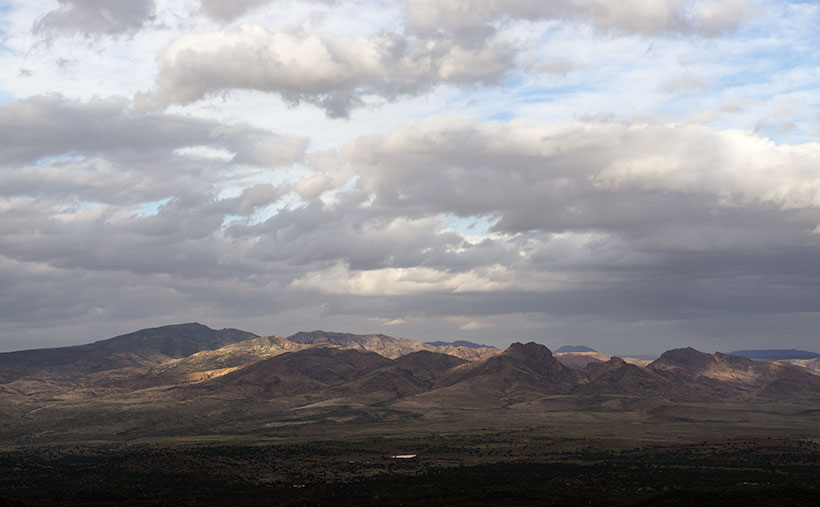Have you ever looked at an Arizona road map and noticed the large chunks of unpopulated areas? It seems like the western third of the state is deserted. Most of the time there’s a good reason no one lives there and maps that show the land ownership quickly show why. For example, the military uses much of the land between Interstate 8 and the Mexican Border for bombing practice—what better use of a desert is there? Most of the area north of Interstate 40 and Utah is either the Grand Canyon or tribal land. The western third of Arizona is lower Sonoran or Mohave desert, and it gets a lot less rain than the rest of the state.
Then there’s Arizona’s Bermuda Triangle. Three highways define its legs: U.S. 93 on the west, Interstate 40 on the north and its eastern boundary is Arizona 89. The land included here isn’t desert wasteland; it ranges in elevation from 3-6 thousand feet. It’s transitional grassland, about the same as Prescott Valley. As I look out my window, I see thunderheads developing in that direction—as they do on most monsoon afternoons, so it gets seasonal rain. Why are there no settlements up there?
As I wrote in last week’s post, this month’s area of exploration is the Aquarius Mountains, and my first journey into them was via Upper Trout Creek Road. It’s a short loop road that intersects with Bogles Ranch Road which my map incorrectly identifies. It climbs to a pass and down the far side. At the top, there’s a religious retreat with a parking area wide enough to stop, take in the view, and then turn around, just like I did when I took this week’s featured image called Mohan Range.

I had never seen or heard about the Mohan Mountains before because as you travel US 93, the Aquarius Range hides them. At one foot shy of 7500’, Mohan Peak is substantial—one of the top 100. I’ve learned since that you can see it in the distance on Interstate 40 and from higher Prescott elevations. As is my way of doing things, I wanted to learn more about these mountains, so when I got back to my office, I hit Google pretty hard. This time I found a goldmine.
The first referral that came back was on a Peakbaggers page. These are people who—for no good reason—like to climb the top 100 mountains in each state (I have no idea what the do in Florida). It’s very informative, well written, and has photos of their expedition. It had a link to a second Webpage written by Kathy McCraine, which has even better photography along with her story of the O-RO ranch.
So why aren’t there any settlements here? Because this land—all quarter million acres of it—is the O-RO ranch (no Dr. Carson, it’s not a cookie). The ranch’s east half started with the Baca Land Float #5. That’s right, one of the authentic Spanish land grants honored by the US Government. According to her story, the original owners merged with a second parcel on its west side—The Mohan Ranch—to create the most significant and oldest cattle ranch in Arizona. It’s run the same as it always was, cowboys on horses rounding up cattle and sleeping in tee-pees. With no town’s or roads, it a hard life and as Kathy tells it (I love this line), “Cowboy wannabe’s need not apply.” The ranch does not welcome visitors and if you’re the area, you best heed of the warning signs.
You can see a larger version of Mohan Range on its Web Page by clicking here. Be sure to come back next week when we set off for another adventure exploring Arizona’s back roads.
Until next time — jw
